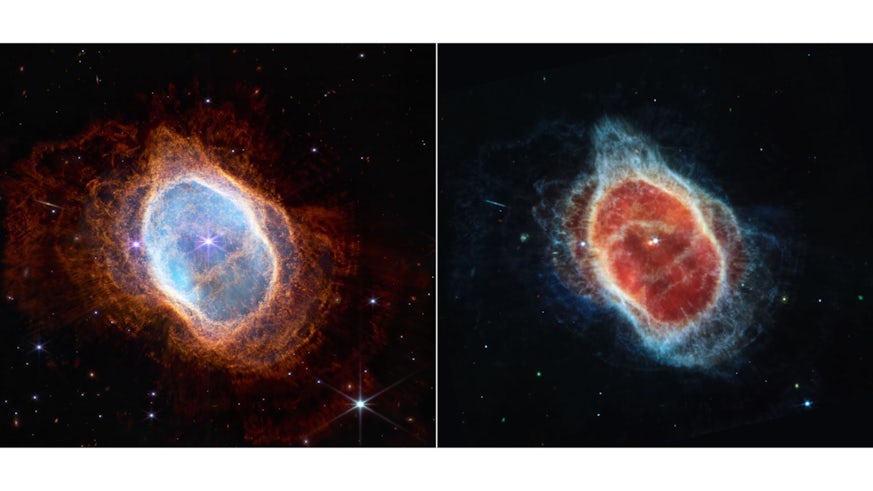Astronomers continue to unravel mysteries of stellar afterlife in new images from space telescope
8 December 2022

An international team of scientists claim to have the clearest evidence yet of the events that follow the death of a star.
Analysis of some of the first astronomical images captured by JWST, has helped identify previously unseen structures within a stellar landscape approximately 2,500 light-years away from Earth.
The clouds of knots, filament and gas expelled by dying stars are known as planetary nebulae.
Until now, astronomers had difficulty understanding how stars, which are almost perfectly spherical, could create complex nebulae with clumps, jets, shells and haloes at the end of their lives.
But in the study, published in Nature Astronomy, the team used data from NASA’s new telescope together with existing data from space and ground-based facilities to reveal a system of up to five stars at the heart of a little known nebula.

Dr Mikako Matsuura, Reader at Cardiff University’s School of Physics and Astronomy, who worked extensively with the international team said: "When we first saw these images we realised there was dust at heart of the nebula which was surprising because we previously understood this to move out and away from the ultra-hot central star."
Captured as part of JWST’s early release observations programme, the telescope used its Near Infrared Camera and Mid-Infrared Instrument to create the images of planetary nebula NGC 3132, nicknamed the Southern Ring nebula.
Previously thought to be elliptical in shape, JWST’s infrared wavelengths revealed a dusty disk within the Southern Ring formed from winds and gasses trapped around the dying star and its companion star.

"JWST’s powerful infrared view has brought the nebula’s primary star into full view changing the landscape of the Southern Ring altogether. This means the smooth spherical outflow we expected is disrupted and replaced by asymmetrical patterns as the stars orbit one another trapping the dust in the gravitational forces in between."
Astronomy Group
Cardiff Hub for Astrophysics Research and Technology
The team, led by Professor Orsola De Marco of Macquarie University in Sydney and made up of almost 70 scientists from universities across the UK, Europe, Asia, Australia, South America, Mexico, the USA and Canada, convened to analyse the images, which were among JWST’s first observations and released by NASA in July 2022.
They say the images also reveal, for the first time, the molecules that lie outside this nebula – a clue to understanding how the building blocks necessary for life feed into the universe.
Co-author Dr Roger Wesson, also from Cardiff University’s School of Physics and Astronomy, added: "Historically, planetary nebulae seemed to be quite simple objects - roughly spherical shells of gas, with a single star at their centre. The Hubble Space Telescope showed that they were far more complex than that, triggering a long debate about how they are formed and shaped.
"These JWST images reveal yet more complex structures but also provide some answers, showing that a star system with at least four members lies at the centre of the Southern Ring nebula, sculpting the material thrown off by one of the stars at the end of its life."

"Such amazing results from JWST’s earliest observations are a wonderful demonstration of its capabilities, and the next few years will be very exciting as more observations are taken, allowing us further opportunities to examine these mysterious structures, the origins of our universe and our place in it."
Launched in December 2021, JWST is an international programme led by NASA with its partners, the European Space Agency and the Canadian Space Agency.
The premier observatory of the next decade, JWST will enable astronomers worldwide to study every phase in the history of our Universe, ranging from the first luminous glows after the Big Bang, to the formation of stellar and planetary systems capable of supporting life on planets like Earth, to the evolution of our own Solar System.
Share this story
It is a friendly, approachable School with a strong commitment to teaching excellence and world class research in physics and astronomy.



